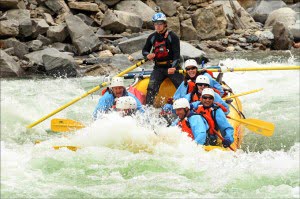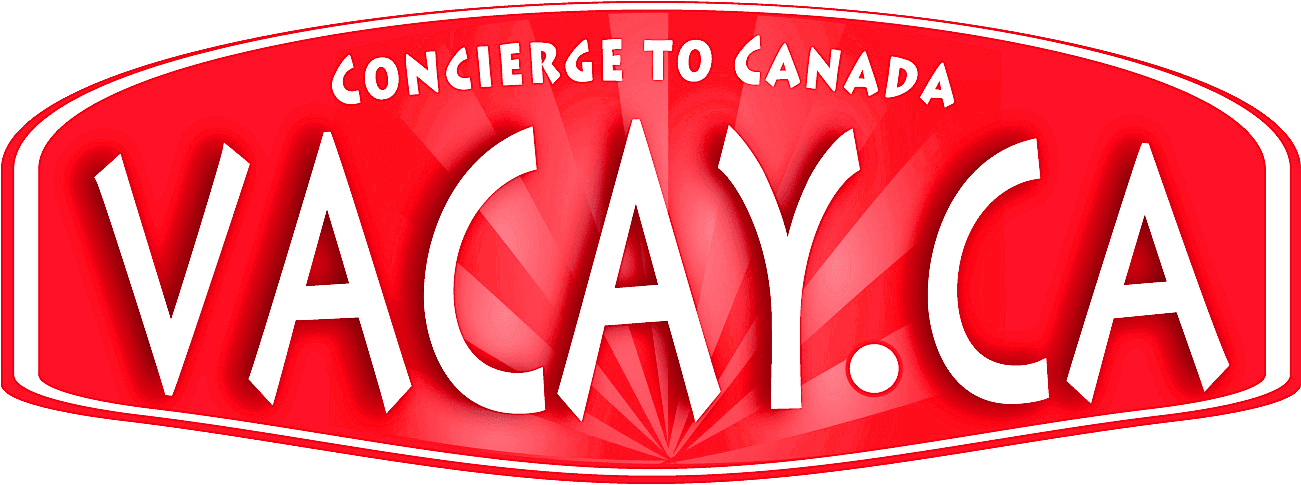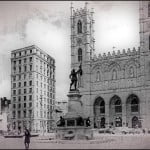[nggallery id=10]
Story by Karen Evenden
Vacay.ca Writer

Yikes! The Kicking Horse River isn’t described as wild and daunting for nothing! (Photo by Darren Colton)
GOLDEN, BRITISH COLUMBIA — Being the volunteer organizer of an outdoors activity group often evokes comments such as “You must be one of those hard-core adventure people!” or similar.
Contrary to expectations, I think I would more aptly describe myself as a “determined yet often apprehensive British chick with a slight penchant for personal injury.” Therefore, if I can achieve something, pretty much anyone can. After all fear is only in the mind, correct?
My mind unfortunately was trying to run the show when I signed up recently for a white-water rafting tour on the Kicking Horse River in British Columbia. My one and only previous rafting experience (which was more years ago than I care to remember) resulted in me flailing underneath a capsized raft — so I was a tad nervous about trying again.
The glacier-fed Kicking Horse River became British Columbia’s first designated Canadian Heritage River in 1989. Often described as wild and untamed, the river is celebrated as one of the best rafting destinations in the country.
Named by Sir James Hector in 1858 after he was kicked by his packhorse during exploration, the river runs from Wapta Lake, flows southwest dropping over the stunning Wapta Falls and then continues northwest to the town of Golden, where my adventure began.
Glacier Raft Company offers a number of white-water rafting tours and it was with some trepidation that I joined the Kicking Horse Challenge tour in late May. The day began grey, overcast and a little cool, but with the promise of warmer temperatures.
Dressed in a sleeveless wetsuit, booties, fleece sweater and splash top, and being notoriously cold-blooded, I doubted I would be warm enough to enjoy the day. When neoprene socks were offered as an extra layer I gratefully accepted a pair and peered hopefully for the sun.
Once we were dressed we were transported by bus to the Upper Canyon area of the river, which is classified with Class 1-3 rapids. River rapids range from Class 1-6 with 1 being simply “moving water” and 6 being “no go!”
Our guide Chad “Pipes” Nogler, originally from Nova Scotia, had more than nine years experience on the Kicking Horse and obligingly suggested I sit close to him in the raft when I explained my unease.
Once the safety instructions were demonstrated and everyone had visited the “bathroom” (a group of trees nearby), six colourful yellow rafts pushed off from the bank and began the Upper Canyon stretch. Each raft seats eight, although there are different sizes available depending on the company’s preference.
The Upper Canyon provides a relaxing and gentle start to the day. There are plenty of opportunities to practise paddling and many photo opportunities as the river meanders peacefully through high-walled canyons. Stunning views of mountain peaks and the Canadian Pacific Railway track accompany the winding route.
After a short time paddling, we stopped for a quick hike as the guides led us through a crevice in the canyon out of which flowed a small stream. The trail was slippery and rocky, yet the neoprene booties have a rubber sole that made climbing the wet surface surprisingly easy. The trail led to a fast-flowing waterfall, and we climbed (some of us with help) to a ledge that is the base of the falls. Sliding down the waterfall chute rather than climbing down was a fun addition for the children and adults on the tour.
The next stop was lunch and we were remarkably hungry after a relatively relaxing morning. Barbecued steak, fresh vegetables, salad, chips, and hot chocolate awaited us at a grassy picnic spot, complete with campfire and benches.
After brownies and chocolate-covered macaroons, it was time for those who were on the family float trip to say goodbye as the remaining rafts continued on to the next adventure.
The Middle and Lowers Canyons are continuous Class 3 and 4 sections of the river and almost immediately we were heading through wild, thrashing, spiralling waters that beckoned our raft as though pulling it on a string.
Chad, our guide, was exemplary in his instruction as he directed us to paddle forwards or backwards accordingly. The rafts are equipped with a guide rope that runs down the middle, and Chad instructed us to hold on when going through more difficult rapids and occasionally to sit completely in the raft.
As we approached each rapid, my nervous anticipation grew into a sense of exhilaration. White-tipped waves poured over our heads from all directions as we deftly manoeuvred around large boulders that seemingly appeared from nowhere. The walls of the canyon were alarmingly close at times but with expert instruction and almost synchronized paddling we tackled the river with enthusiasm and excitement.
The calm between the rapids provided us the opportunity to breathe, enjoy the scenery and be proud of our accomplishments. The Kicking Horse River is a stunning pale green, which contrasted vibrantly with the ice blue sky dotted with dark ominous clouds.
A train rounded the canyon nearby and sounded its horn. The horn was persistent until we glanced up to see a crew member stood smiling at the front of the locomotive, paddling an invisible raft with a broomstick, welcoming us to this stretch of the waterway.
All too soon we approached the mouth of the river coming into Golden. This was the time for play and the daredevils among us stood on the raft and hooked their paddle handles onto the rafters of the bridge we floated beneath. The idea was to hold on, dangling on the end of the paddle mid-air for as long as possible before falling into the river.
The day ended back at base camp where there was a roaring campfire and beer waiting for us. Later, listening to tall stories and looking through photographs I realized that I had conquered the Kicking Horse River and my nervousness of white-water rafting. Perhaps I am hard-core after all!
MORE ABOUT WHITE-WATER RAFTING
Interested in white-water rafting but not sure about what to expect? Here are a few myths that I hope to clear up for you.
Myth: White Water Rafting is cold.
The source of the Kicking Horse River is the Wapta Ice Field in British Columbia’s Yoho National Park, and the average spring and summer temperature of the glacier-fed water is 5 degrees Celsius. The temperature need not be a deterrence, though, as all rafting companies in the area provide wet suits, neoprene booties and gloves, helmets and fleece sweaters.
Myth: During May and June, the river is too high and challenging.
High water season on the Kicking Horse River is normally between the Victoria Day long weekend in May and the beginning of July and the river can rise or drop up to six inches in one day.
Ryan Johannesen, owner of Glacier Raft Company Ltd., says later in the season is often the best time to be on the river. “It’s a blast! People get soaked and love every second of it! Of course, there are some bigger waves and holes to avoid and the river is moving quite quickly at high water which can present an elevated risk in some aspects. That is why guides on the Kicking Horse River are well trained in all river levels so they know what to hit and what to avoid all season long.”
If you are nervous, Johannesen suggests sitting next to the guide for a feeling of security, or rafting in July or August when the spring water runoff has slowed.
Myth: It’s for adults only.
On the contrary, white-water rafting is a great activity for children and there are many operators that offer family-friendly float trips that are an excellent introduction for adults and children.
Myth: You have to be a good swimmer
Many rafting companies require that you are comfortable around water, although you do not need to be a strong swimmer because you will be equipped with a life jacket and the guides are fully trained in water rescue if the need arises.
Glacier Rafting Company is just one of the many companies that operate raft tours on the Kicking Horse River, contact Tourism Golden for further information.
Raft tours on the Kicking Horse River usually run from late May until early September. The Challenge Tour costs $149 for a full day of rafting, including all equipment and lunch.
MORE ABOUT GLACIER RAFT COMPANY
Glacier Raft Company Ltd has been in operation for 30 years and has five full-time guides in addition to a number of part-time guides. All guides carry swift water rescue, first-aid certifications as well as a training standard that meets the provincial guide licence regulations.
Location: 612 7th St North, Golden, BC
Telephone: 250- 344-6521; toll-free: 1-877-344-RAFT (7238)
Website: www.glacierraft.com







